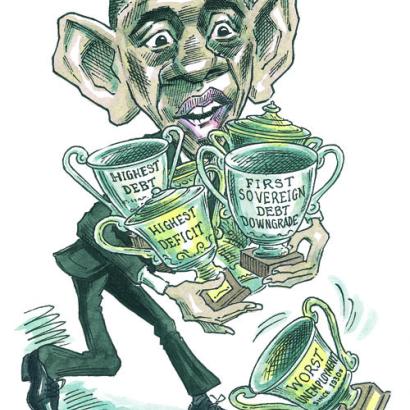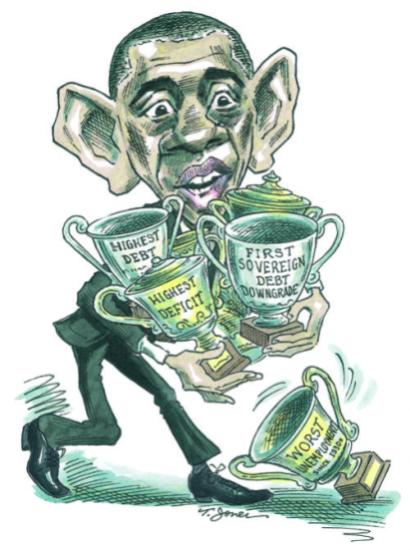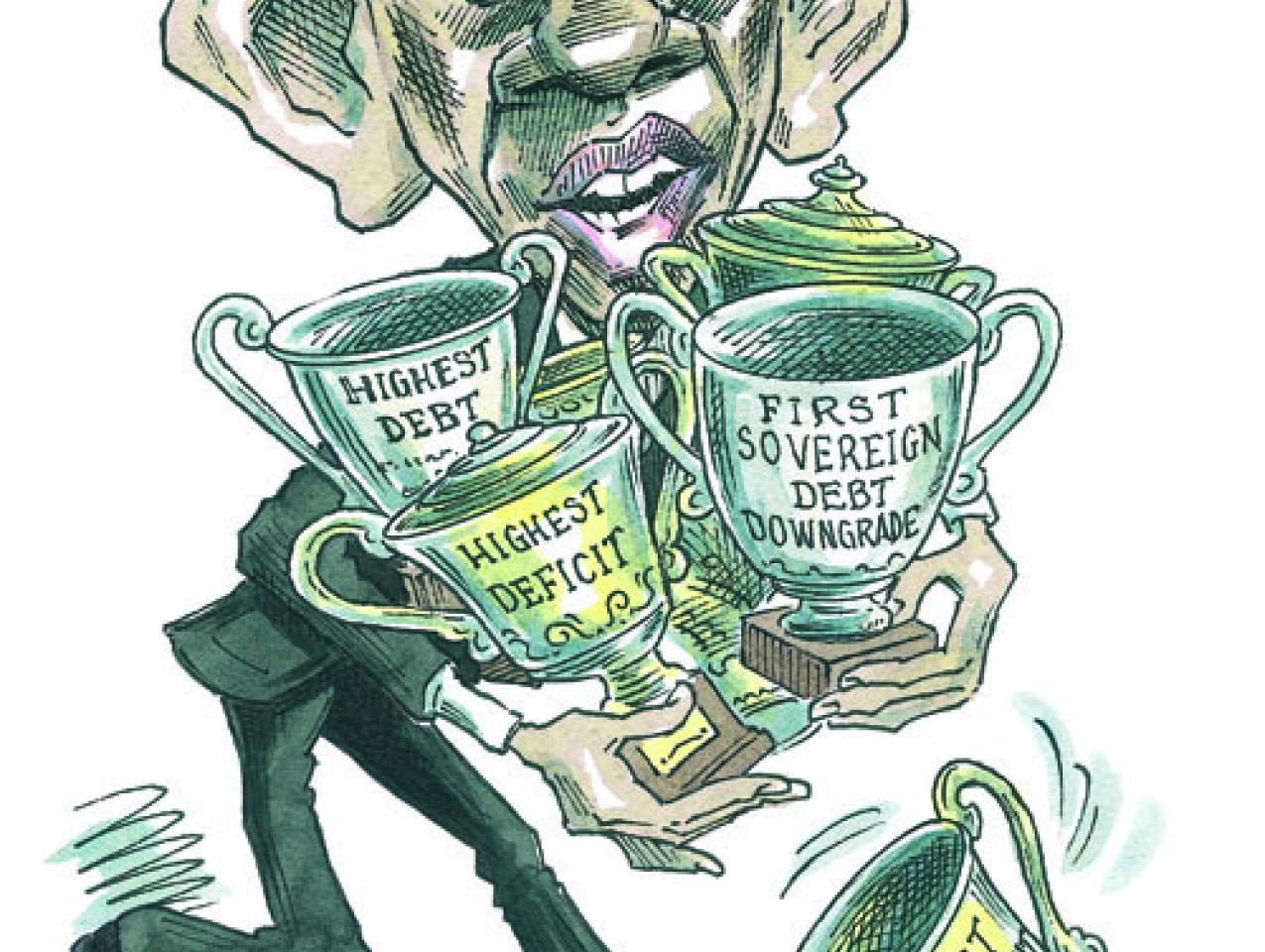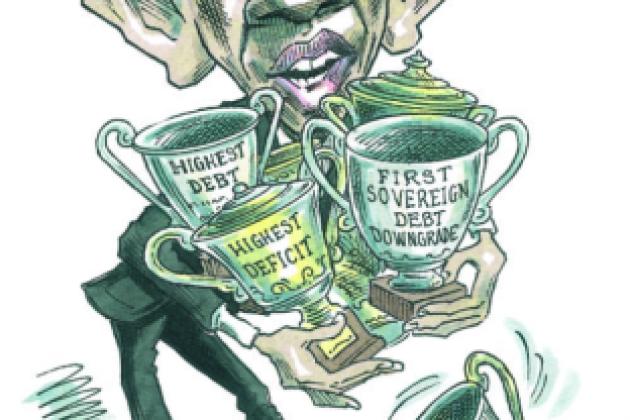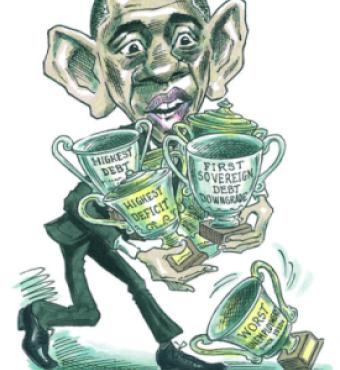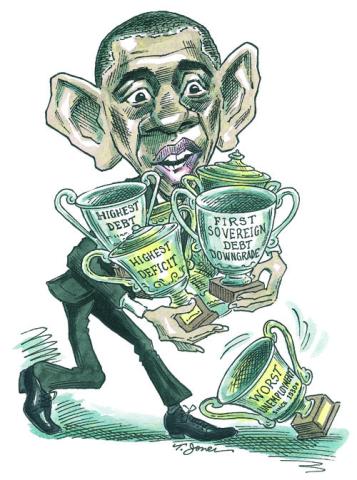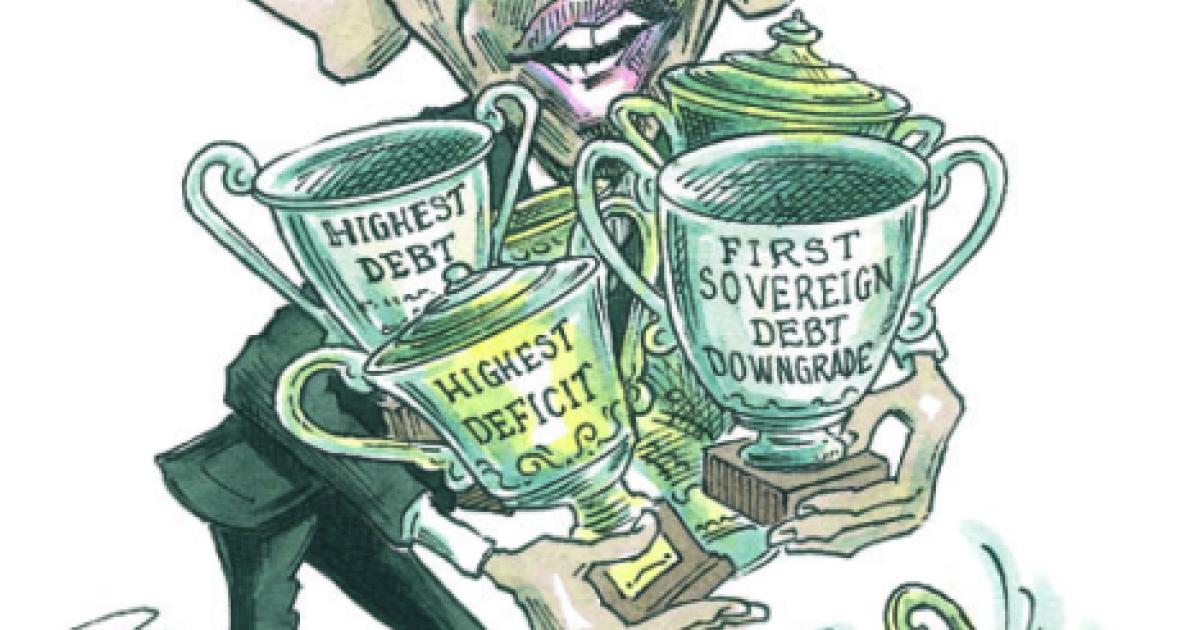- Budget & Spending
- Economics
- Law & Policy
- Regulation & Property Rights
- US Labor Market
- Monetary Policy
- Politics, Institutions, and Public Opinion
- State & Local
- California
When it comes to the economy, presidents, like quarterbacks, often get more credit or blame than they deserve. They inherit problems and policies that affect the economy well into their presidencies and beyond. Ronald Reagan inherited Jimmy Carter’s stagflation. George H. W. Bush inherited twin financial crises (savings and loan and Third World debt). And fixing these problems certainly benefited the Clinton economy.
President Obama inherited a deep recession and financial crisis resulting from problems that had been building for years. Those responsible include borrowers and lenders on Wall Street and Main Street, the Federal Reserve, regulatory agencies, ratings agencies, presidents, and Congress. Obama’s successor will inherit his deficits and debt (i.e., pressure for higher taxes), inflation, and dollar decline.
Fairly or not, historians document what occurred on your watch and how you dealt with your in-box. Three years after his election and more than two years since the economic recovery began, Obama has enacted myriad policies at great expense to American taxpayers and amid political rancor. An interim evaluation is in order.
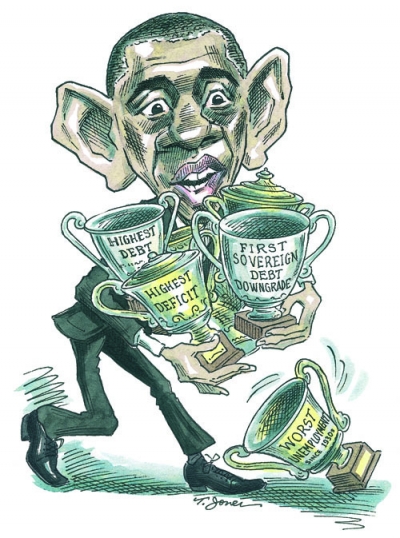
And there’s plenty to evaluate: an $825 billion stimulus package; the Public-Private Investment Partnership to buy toxic assets from the banks; cash for clunkers; the home buyers’ credit; record spending and budget deficits and exploding debt; the auto bailouts; five versions of foreclosure relief; numerous lifelines to Fannie Mae and Freddie Mac; financial regulation and health care reform; energy subsidies, mandates, and moratoria; and constant demands for higher tax rates on “the rich” and businesses.
Consider the direct results of the Obama programs. A few have performed better than expected—for example, the auto bailouts, although a rapid private bankruptcy was preferable and GM and Chrysler are not yet denationalized successes. But the failed stimulus bill cost an astounding $280,000 per job—over five times median pay—by the administration’s inflated estimates of jobs “created or saved,” and much more using more realistic estimates.
Cash for clunkers cost $3 billion, just to shift car sales forward a few months. The Public-Private Investment Partnership, despite cheap federal loans, generated 3 percent of the $1 trillion claimed, and toxic assets still hobble some financial institutions. The Dodd-Frank financial reform law institutionalized “too big to fail” amid greater concentration of banking assets and mortgages in Fannie and Freddie. The foreclosure relief program permanently modified only a small percentage of the four million mortgages the president promised. And eventually even Obama admitted that the shovels weren’t ready in all those “shovel ready” stimulus projects.
Perpetually overpromising and underdelivering is not remotely good enough, not even for government work. No corporate CEO could survive such a clear history of failure. The economic records set on Obama’s watch really are historic (see “By the Numbers,” next page). These include the first downgrade of sovereign U.S. debt in American history, and, relative to GDP, the highest federal spending in U.S. history save the peak years of World War II, plus the highest federal debt since just after World War II.
- U.S. sovereign debt downgrade: first in American history
- Federal spending (25% of GDP): highest since World War II
- Budget deficit (10% of GDP): highest since World War II
- Federal debt (67% of GDP): highest since just after World War II
- Employment (58.1% of population working): lowest since 1983
- Long-term unemployment (45.9% of total): highest since 1930s
- Increase in nonfarm payroll employment (0.5%) since recovery began 26 months previously: slowest job growth in the 26 months after a severe recession since World War II
- Home ownership rate (59.7%): lowest since 1965
- Percentage of taxpayers paying income tax (49%): lowest in modern era
- Government dependency (47%), defined as the percentage of persons receiving one or more federal benefit payments: highest in American history
The employment picture doesn’t look any better. The fraction of the population working is the lowest since 1983. Long-term unemployment is by far the highest since the Great Depression. Job growth during the first two years of recovery after a severe recession was the slowest in postwar history.
Moreover, the home ownership rate is the lowest since 1965 and foreclosures are at a post-Depression high. And perhaps most ominous, the share of Americans paying income taxes is the lowest in the modern era, while dependency on government is the highest in U.S. history.
That’s quite a record, although not what Obama and his supporters had in mind when they pronounced this presidency historic.
The president constantly reminds us, with some justification, that he was dealt a difficult hand. But the evidence is overwhelming that he played it poorly. His actions—big government spending, more debt and regulation—have clearly failed. Relative to previous recoveries from deep recessions, the results are disastrous. A considerable fraction of current joblessness, lower living standards, dependency on government, and destroyed savings is the result. Worse, his debt explosion will be a drag on economic growth for years to come.
Obama was never going to enthusiastically embrace pro-market, pro-growth policies. But many of his business and Wall Street supporters (some now former supporters) believed he would govern more like President Clinton after 1994. After a stunning midterm defeat, Clinton embarked on an “era of big government is over” collaboration with a Republican Congress to reform welfare, ratify the North American Free Trade Agreement, and balance the budget. But Obama starts much further left than Clinton and hence has a much longer journey to the center.
The president still has time to rebound from his economic policy missteps by promoting permanent, predictable policies to strengthen forecasted anemic growth. But do Obama and his advisers realize that their analysis of the economic crisis was flawed and their attempted solutions mostly misconceived? That vast spending, temporary tax rebates, and social engineering did little of lasting value yet at immense cost? That the prospect of ever more regulation and taxation created widespread uncertainty and severely damaged incentives and confidence? That the repeated attempts to prevent markets (e.g., the housing market) from naturally bottoming and rebounding have created confusion and inhibited recovery?
Can Obama change course, given the evidence that the economy responded poorly to top-down direction from Washington rather than the bottom-up individual initiative that is the key to strong growth? Is he willing to rein in the entitlement state erected under radically different economic and demographic conditions? And will he reform the corporate and personal income taxes with much lower rates on a broader base? Or is he going to propose the same failed policies—more spending, social engineering, temporary tax cuts, and permanent tax hikes?
On the answer to these questions rests much of Obama’s future—and the nation’s.








